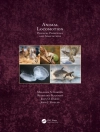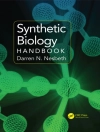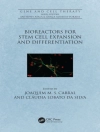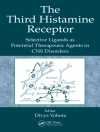This book presents the latest knowledge, trends, and advances in cell transplantation and innovations in developing microspheres, 3D biomaterial constructs to enhance transfer, and cell survival to specific regions of the brain. Neurodegenerative diseases and brain injury are increasing. Medications currently only temporarily reduce some of the symptoms but do not cure or delay progression of the disease. Development of effective treatments dramatically improves the independent living and quality of life of patients. Cell transplantation strategies offer an approach to facilitating brain repair, but efficacy is often limited by low in vivo survival rates of cells that are injected in suspension. Transplanting cells that are attached to or encapsulated within a biomaterial construct has the advantage of maintaining cell-cell and cell-material interactions and improving cell survival in vivo. Biomaterials that have been used in preclinical studies to assist with in vivo cell transfer and survival include heparin-chitosan microspheres, poly(lactic-co-glycolic acid) microspheres, RADA 16 microspheres, poly(desaminotyrosyl tyrosine ethyl ester carbonate) microscale scaffolds, carbon nanotubes, collagen-chitosan scaffolds, poly(L-lactic acid) scaffolds, agarose hydrogels, gelatin methacrylate hydrogels, and agarose micro-columns with an extracellular matrix interior. Incorporating growth factors (e.g., glial-derived neurotrophic factor, neurotrophin 3) into the biomaterial constructs increased cell survival and incorporation into the host tissue. International experts in the fields of both experimental and clinical neurological research contribute chapters to this book and discuss the latest achievements in cell transplantation and matrix-assisted cell transfer/survival technologies for diseases such as Alzheimer’s disease, Parkinson’s disease, and brain injuries such as stroke and traumatic brain injury.
It is envisaged that research findings in experimental animal models of Alzheimer’s disease, Parkinson’s disease, traumatic brain injury, and stroke promote clinical trials using biomaterial-assisted transfer of cells.
Mục lục
Initiating and Facilitating Brain Repair: Factors, Principles, and Mechanisms.- Strategies to Upgrade the Stem Cell Application for Brain Transplantation.- Neural Stem Cell Intervention in Traumatic Brain Injury.- Neurotrophic Factors in Parkinson’s Disease: Clinical Trials.- Emerging Nanotechnology for the Treatment and Diagnosis of Parkinson’s Disease (PD) and Alzheimer’s Disease (AD).- Poly(Butyl Cyanoacrylate) Nanoparticles deliver β-Nerve Growth Factor to the Brain after Traumatic Brain Injury.- The Significance of Biomaterials in Stem Cell-Based Regenerative Medicine.- Endogenous in situ Tissue Regeneration using Inductive Bioscaffolds after Acute Brain Injury.- Alginate Nanofibre Scaffolds for Amyotrophic Lateral Sclerosis.- Developing High-Fidelity in vitro Models of Traumatic Brain Injury to Test Therapeutic Biomaterials.- Challenges and Future Perspectives of Using Bioactive Scaffolds in Brain Repair.
Giới thiệu về tác giả
Dr. Philip Peplow is Biomedical Scientist. Philip obtained his doctoral degree in Carbohydrate Chemistry from the University of Birmingham, England. He worked as Research Fellow for four years in the Anatomy Department, Medical School, University of Birmingham, England, and was awarded a Ford Foundation Fellowship to work at the renowned C.S. Mott Center for Human Growth and Development, Wayne State University, Detroit, USA. After one year of working there, he gained an academic position in the Human Morphology Unit, Flinders Medical School, Adelaide, South Australia, where he taught 2nd and 3rd Year medical students for three years, and then in the Anatomy Department, Otago Medical School, Dunedin, New Zealand, where he continued his research interests as well as teaching 2nd, 3rd, and 5th Year medical students for 38 years.
Dr. Bridget Martinez is Medical Doctor as well as Scientist. Bridget has obtained two doctoral degrees, a M.D. and a Ph.D. in the field of Quantitative and Systems Biology and Comparative Physiology with an emphasis in Endocrinology. Bridget is an extensively published author with results from her studies having impactful biomedical implications, to date she has published over 50 peer-reviewed publications! In addition, she has published and edited four medical books which strive to provide comprehensive scientific knowledge in various biomedical fields in publishing groups such as Springer Nature and the Royal Society of Chemistry, as Editor, Author, and Artist, with her art pieces featured on the cover of Springer Nature. Her most current book identifies prognostic biomarkers for disease, as well as evaluates translational value from clinical trials. Professor Thomas A Gennarelli attended Northwestern University before graduating cum laude from Loyola Stritch Medical School in 1968. He interned in surgery at Rush University and then began a training journey that took him to Harvard for a neurology fellowship before serving as a commissioned officer in the US Public Health Service. It was during this time when he was stationed at NIH that his interest in neurotrauma and neuroscience began. Devoted to better understanding how mechanical energy disturbed the function of nervous tissue and brain physiology, he continued his NIH lab while undertaking a neurological surgery residency at Georgetown University.












